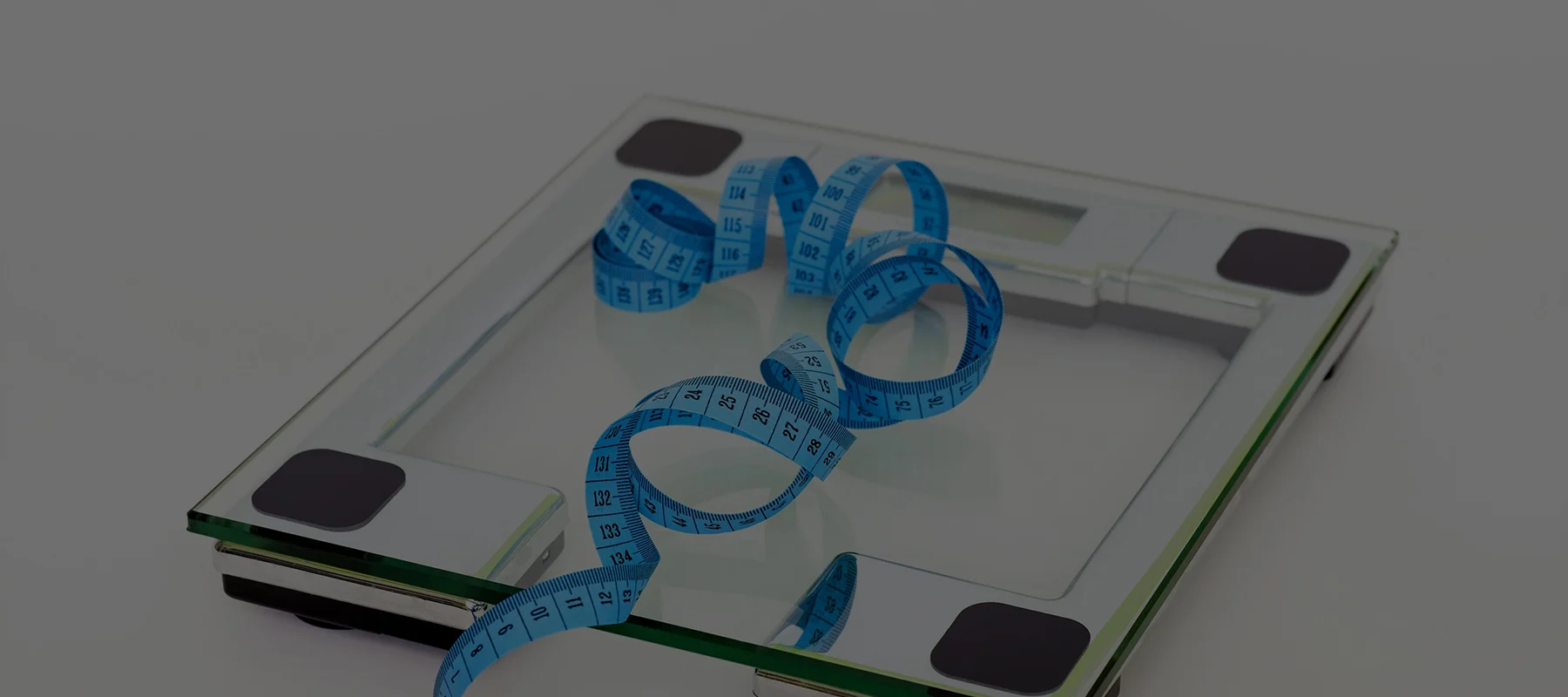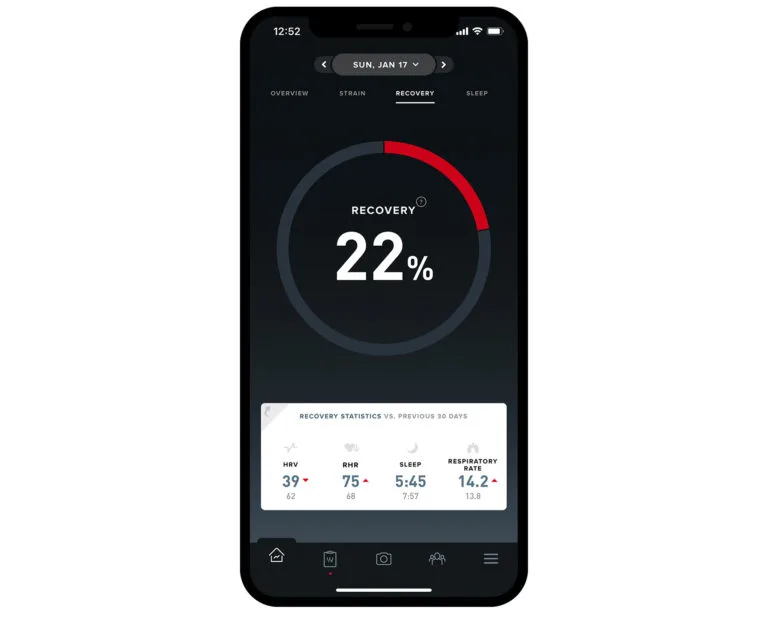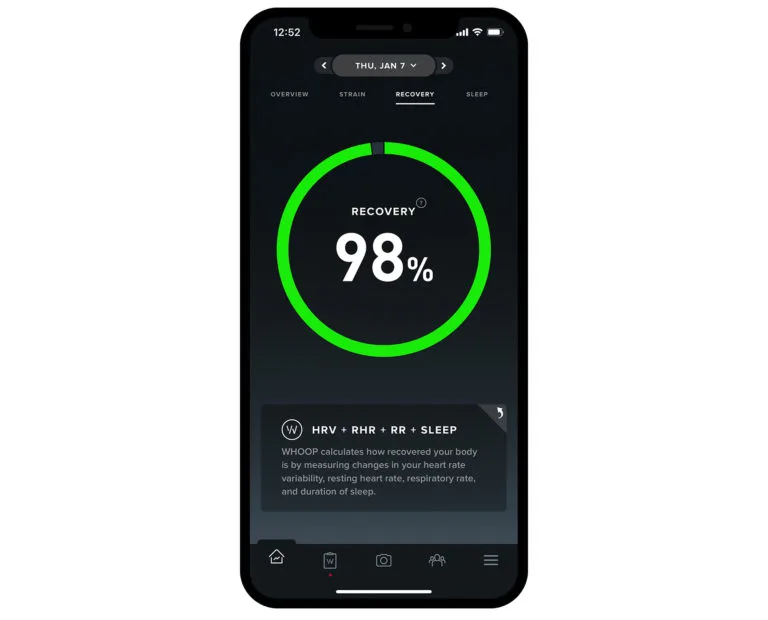Topics
- Article
- Health & Wellness
- Nutrition
How Under-Eating Can Impact WHOOP Data: Insight into My Eating Disorder and Recovery

The biggest difference between my lowest WHOOP recovery and my highest? Food.
As a survivor of anorexia, I now realize how much my WHOOP metrics would have helped me when I was in the midst of it. For a girl who never thought she’d be able to listen to her body, my WHOOP membership has proven to be priceless. My life before was one where I really thought I was doing my best to be healthy. With society (and other wearables) focusing on tracking calories, meals and steps, it can be easy to spiral into an unhealthy relationship with food and exercise. This was my world, disguised under the veil of “health.” Under that veil was a person very far from actually being healthy; a person consumed by diet culture and one that didn’t know how to stop focusing on weight and start focusing on real health.
Why WHOOP Differs from Other Fitness Trackers
WHOOP isn’t like those other wearables. There is no focus on “daily steps” or calorie tracking, and a very obvious emphasis on recovery. Although I got my WHOOP after going through a very long and emotionally grueling process of ED recovery, my WHOOP data still gives me so much information about what I was doing to my body back in my worst days of struggling with balancing fitness and true health. Back then, I didn’t have anything to tell me how much stress I put my body under by under-fueling and overexercising every single day. WHOOP shows me exactly how much strain I take on now, even when I don’t particularly feel stressed.
My Worst WHOOP Recovery
There have been a few days where, purely due to circumstance, I didn’t eat enough for my body to recover and the implications were reflected in my WHOOP data the next day. Here is the data from one of those days:

For context, I didn’t push my workout like I used to, so my food intake mimicked a true independent variable. I also did my regular nightly stretch that usually heightens my recovery, and spent close to 8 hours in bed. My low sleep time that night (only 5:45) was actually an expected surprise, if that makes sense. I’ll explain more below.
How My Eating Disorder Affected My Sleep
When I was in the worst stages of my eating disorder, I woke up quite often with hunger pangs through the night, and understandably so. This had a very direct correlation with how much sleep I’d lose, since my body was focused on acquiring more food. Additionally, I woke up at least 3-4 times to pee, which was a symptom of extremely low estrogen. This also contributed to loss of sleep. Finally, despite struggling to fall asleep (which is tracked by WHOOP as “sleep latency”) and losing even more sleep throughout the night, I consistently woke up at 7 am every single morning, whether I went to bed at 10 pm or 2 am. My recent WHOOP data shown above emulates all of this in an eerily perfect way. That night, I remember waking up twice to pee, and hunger pangs as soon as I woke up that morning. Then there’s the obvious poor recovery (22%), low heart rate variability (39 ms) and high resting heart rate (75 bpm) due to the physiological stress caused by under-eating. It even affected my respiratory rate that night, which has consistently been 13.8 since the first day I used WHOOP.
My Best WHOOP Recovery
For comparison, here is my data from a high-recovery morning where I made sure to eat plenty of food the day before and kept everything else basically the same:

Not only did this open my eyes to the physical and emotional stress I put my body through during my ED, it also made me realize how useful of a tool WHOOP can be for the recovery community. To elaborate on what I mentioned before, many other wearables have a connection to perpetuating unhealthy eating and exercise behaviors in someone with an eating disorder by emphasizing ‘daily steps’ and calorie burns, and not focusing on the corresponding impact of strain on the body. The reason WHOOP feels different for me than other fitness trackers is because it instead prioritizes recovery and sleep. That helps me eliminate the guilt that came with resting during my ED, and not feeling like I constantly had to keep moving and adding more ‘steps’ to my day.
WHOOP Data Knowledge Could’ve Helped Combat My Eating Disorder
The WHOOP strain and HRV would have been perfect metrics to make me realize the implications of my overtraining, as reflected in my recovery scores. These metrics serve as powerful data points to someone whose mind is skewed in the extreme; a mind that makes them genuinely feel like they constantly need to do more and eat less. These realizations apply not only to people who are suffering or have suffered from eating disorders, but also to anyone who has the tendency to fall prey to diet culture and a very extreme mindset with exercise. When I was at my worst, I truly believed that exercising for 90 minutes a day, not taking extra rest days when I was sick, injured or tired, and eating way too little was just me making sacrifices to be “fit” and “healthy.” In reality, I was ironically pushing myself further and further away from an actual healthy body. I know I was not alone in feeling this way about food and exercise, and I wish I had my WHOOP to show me that my actions did not align with my goals. I believe it could have helped in preventing me from developing an eating disorder, and offered evidence that I was on the right path during my recovery. This might have saved me from years of grief, physical pain, and emotional distress in recovering. This story was sent to us by a WHOOP member who chose to remain anonymous. The products and services of WHOOP are not medical devices and should not be used as a substitute for professional medical advice, diagnosis or treatment. All content available through the products and services of WHOOP is for general informational purposes only.